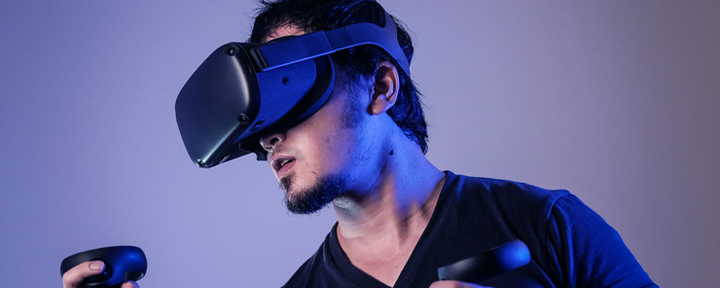
The Inconvenient Truths About VR-Based Goggle Training
By Lon Bartel and Bob Ferris
It is tempting to embrace VR training. After all, VR headsets are high-tech and will surely be welcomed by millennials, right? Actually, like so many things in life, the truth is more complicated.
Training?
Let us start with the fundamentals. Is the trainee receiving important and valid training? If de-escalation training is needed, then realistic and accurate human appearance, speech and movement is required, otherwise any outcome during training could be dismissed due to the lack of realism. Likewise, if marksmanship training is needed, then a realistic and accurately tracked weapon is needed, otherwise any outcomes during training could be dismissed due to a lack of realism of the simulated weapon. But, if both de-escalation and marksmanship are to be trained, these problems are only magnified.
Imagine practicing on a simulator that shows video game-like characters and the impact of all rounds are 5 inches to the left. After, the officer is informed they failed the hostage scenario—but did they? If the hostage taker was a real human, the officer could have read their body language, the look in their eyes, the tightness of their grip and, if the officer fired a real pistol, they know they would have hit the hostage taker instead of the hostage.
If officers adjust to the training, intentionally firing 5 inches to the right, they might do better in the next scenario but far worse in real life. This situation is a textbook example of the term “negative training”, when training actually hampers performance. There is no room for this in 2021 America, when perfected policing is demanded now more than any other time in history.
One inconvenient training challenge lies with human realism. For VR headset-based training, it is very common to use computer game-looking avatars. Keep in mind that people are astonishingly capable at reading subtle clues presented by humans in real encounters, but cannot ‘read’ these computer-generated avatar humans. This all but eliminates the effectiveness of gaining new insights and skills during the training session. An indicator of being on the wrong path is when a trainee reports to their fellow officers after VR training, “The avatars were a joke – nothing like talking with a real person.”
Officers must rely on nuanced verbal cues in de-escalation and judgmental use of force situations in order to predict what might happen next. This is how officers make split-second to raise their tone of voice, lowering a weapon or choosing to fire.
Our reliance on subtle cues is reinforced by multiple research studies. These state, on average, people place 55% importance on body language, 38% importance on tone of voice and 7% importance on the words spoken by the other individual³, ⁴.
If over 50% of a person’s decision-making is based on nonverbal communication alone, then naturally, computer avatars—with their lack of ability to recreate subtle body language—do not equal effective training. Especially in decision-making training where human interaction is critical. But a solution exists. Instead of VR, certified video-based training is needed, as it utilizes photorealistic people who present accurate cues for officers, which makes life-saving training effective. Since video-based training varies immensely from supplier to supplier, it is equally important that the simulation training content be high-quality and certified by IADLEST or another respected national or international association. Relying on certified curriculum is also legally prudent – if shots are fired, a law suit can occur and juries will want to know if the agency provided effective training or not.
To continue reading, download the entire article here.
Recently Published
Join Our Newsletter







